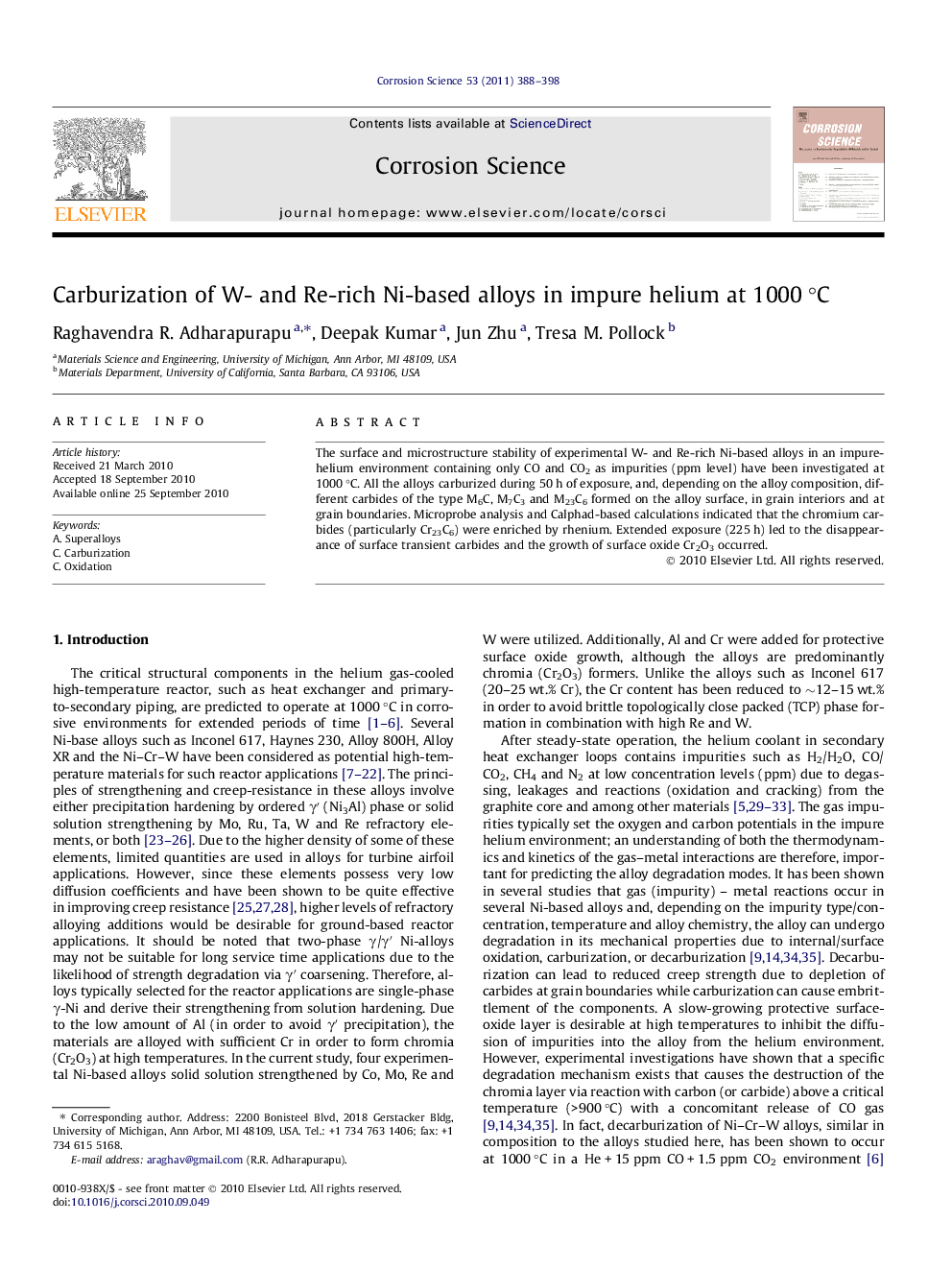| کد مقاله | کد نشریه | سال انتشار | مقاله انگلیسی | نسخه تمام متن |
|---|---|---|---|---|
| 1469847 | 990310 | 2011 | 11 صفحه PDF | دانلود رایگان |

The surface and microstructure stability of experimental W- and Re-rich Ni-based alloys in an impure-helium environment containing only CO and CO2 as impurities (ppm level) have been investigated at 1000 °C. All the alloys carburized during 50 h of exposure, and, depending on the alloy composition, different carbides of the type M6C, M7C3 and M23C6 formed on the alloy surface, in grain interiors and at grain boundaries. Microprobe analysis and Calphad-based calculations indicated that the chromium carbides (particularly Cr23C6) were enriched by rhenium. Extended exposure (225 h) led to the disappearance of surface transient carbides and the growth of surface oxide Cr2O3 occurred.
Research highlights
► This work investigates the surface and bulk stability of W- and Re-rich Ni-based alloys under carburizing/oxidizing conditions (1000 °C) in order to understand the fundamental mechanisms of material degradation due to impurities in helium environment of the very high temperature helium-cooled reactor (VHTR).
► Depending on the alloy composition, carbides of type M6C, M7C3 or M23C6 were observed, with a maximum carbon pickup between 0.06 and 0.12 wt.%. Alloys with high W content exhibited M6C type carbides, whereas high Cr and low W alloys formed Cr-rich M23C6 carbides. High additions of Re stabilized the M23C6 phase due to its high solubility in these chromium-rich carbides.
► A continuous film of contiguous carbides (M6C and M23C6) was observed in the grain boundaries; this is likely to be detrimental to the ductility and creep properties.
► During the first 50 h exposure, carbides were observed on the alloy surface as well as in the bulk with carbides precipitating in the grain interior and on the grain boundary. The (transient) surface carbides oxidized after prolonged exposure (100–225 h) forming stable Cr2O3 oxide on the alloy surface.
► The work is particularly relevant to the development of strategies towards improvement of Ni-based alloys for intermediate heat exchangers (IHX) for service at 1000 °C in impure-He environment of the Next Generation Nuclear Plant (NGNP).
Journal: Corrosion Science - Volume 53, Issue 1, January 2011, Pages 388–398